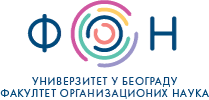Приказ основних података о документу
Linguistic Patterns and Linguistic Styles for Requirements Specification: Focus on Data Entities
| dc.creator | da Silva, Alberto Rodrigues | |
| dc.creator | Savić, Dušan | |
| dc.date.accessioned | 2023-05-12T11:36:09Z | |
| dc.date.available | 2023-05-12T11:36:09Z | |
| dc.date.issued | 2021 | |
| dc.identifier.issn | 2076-3417 | |
| dc.identifier.uri | https://rfos.fon.bg.ac.rs/handle/123456789/2211 | |
| dc.description.abstract | Requirements specification includes technical concerns of an information system and is used throughout its life cycle. It allows for sharing the vision of the system among stakeholders and facilitates its development and operation processes. Natural languages are the most common form of requirements representation, however, they also exhibit characteristics that often introduce quality problems, such as inconsistency, incompleteness, and ambiguousness. This paper adopts the notions of linguistic pattern and linguistic style and discusses their relevance to produce better technical documentation. It focuses on the textual specification of data entities, which are elements commonly referred to throughout different types of requirements, like use cases, user stories, or functional requirements. This paper discusses how to textually represent the following elements: data entity, attribute, data type, data entity constraint, attribute constraint, and even cluster of data entities. This paper shows concrete examples and supports the discussion with three linguistic styles, represented by a rigorous requirements specification language and two informal controlled natural languages, one with a more compact and another with a more verbose, expressive, and complete representation. We analyzed how other languages cope with the representation of these data entity elements and complemented that analysis and comparison based on the PENS classification scheme. We conducted a pilot evaluation session with nineteen professional subjects who participated and provided encouraging feedback, with positive scores in all the analyzed dimensions. From this feedback, we preliminarily conclude that the adoption of these linguistic patterns would help to produce better requirements specifications written more systematically and consistently. | en |
| dc.publisher | MDPI, Basel | |
| dc.relation | FCT [UIDB/50021/2020, 02/SAICT/2017/29360] | |
| dc.relation | MDPI | |
| dc.rights | openAccess | |
| dc.rights.uri | https://creativecommons.org/licenses/by/4.0/ | |
| dc.source | Applied Sciences-Basel | |
| dc.subject | requirements specification | en |
| dc.subject | linguistic style | en |
| dc.subject | linguistic pattern | en |
| dc.subject | domain model | en |
| dc.subject | data entities | en |
| dc.subject | controlled natural language | en |
| dc.title | Linguistic Patterns and Linguistic Styles for Requirements Specification: Focus on Data Entities | en |
| dc.type | article | |
| dc.rights.license | BY | |
| dc.citation.issue | 9 | |
| dc.citation.other | 11(9): - | |
| dc.citation.rank | M22 | |
| dc.citation.volume | 11 | |
| dc.identifier.doi | 10.3390/app11094119 | |
| dc.identifier.fulltext | http://prototype2.rcub.bg.ac.rs/bitstream/id/771/2207.pdf | |
| dc.identifier.rcub | conv_2491 | |
| dc.identifier.scopus | 2-s2.0-85105660685 | |
| dc.identifier.wos | 000649978500001 | |
| dc.type.version | publishedVersion |

